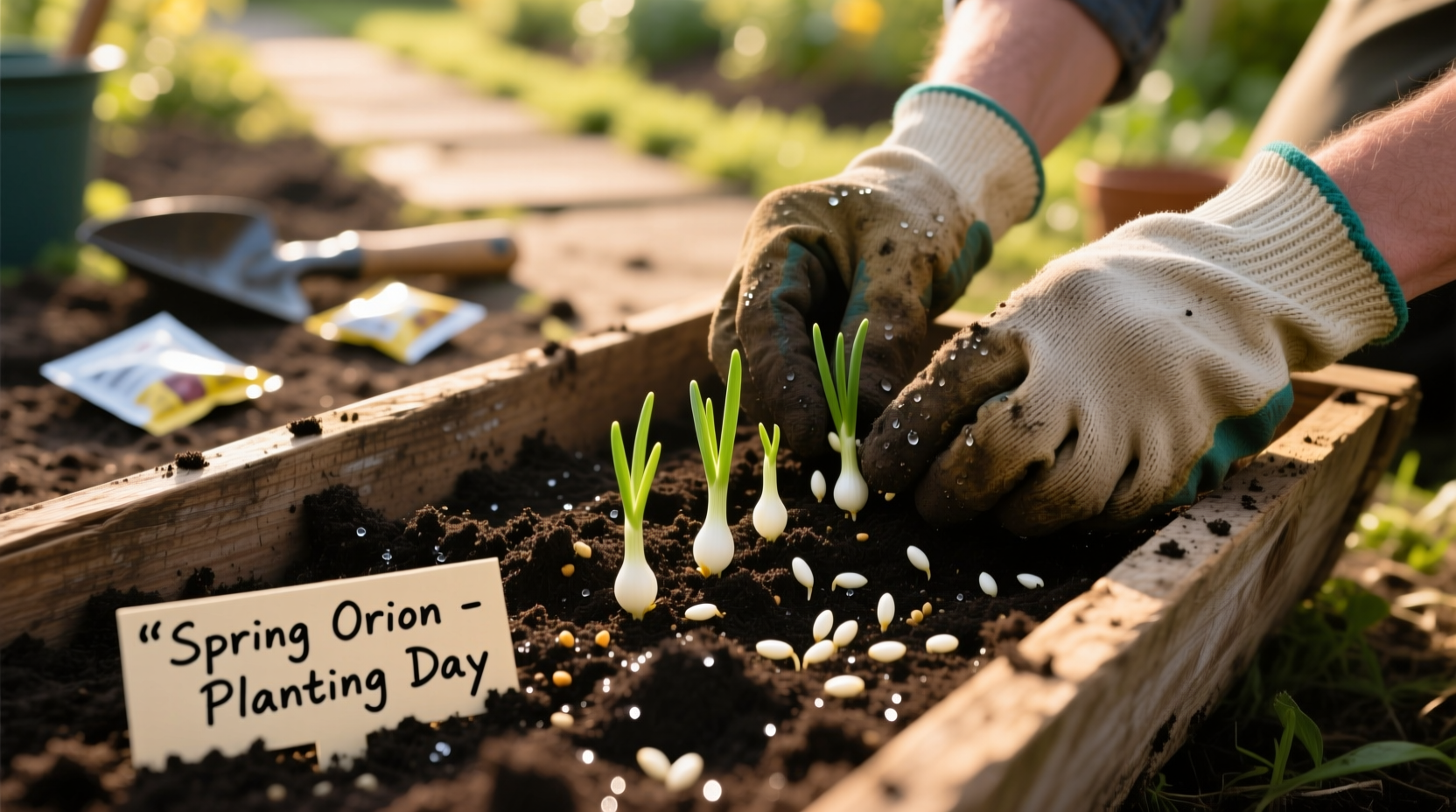Spring onions offer one of the quickest and most rewarding experiences for beginner gardeners. Whether you're working with limited balcony space or a sprawling backyard, these versatile alliums provide fresh flavor while requiring minimal maintenance. This guide delivers precisely what you need to transform tiny seeds into crisp, flavorful harvests—no gardening degree required.
Planning Your Spring Onion Growing Season
Timing makes all the difference when planting spring onion seeds. According to the University of Minnesota Extension, the ideal planting window begins when soil temperatures consistently reach 15°C (60°F). In most temperate climates, this means:
| Climate Zone | Best Planting Months | Soil Temperature |
|---|---|---|
| Cool temperate | March-May | 15-20°C (60-70°F) |
| Moderate | February-April | 16-21°C (62-70°F) |
| Warm | September-November | 18-24°C (65-75°F) |
Unlike mature onions, spring onions thrive in cooler conditions and bolt less frequently. For continuous harvests, implement succession planting every 2-3 weeks throughout the growing season. This technique ensures you'll have fresh spring onions available from late spring through early fall.
Seed Selection and Preparation Essentials
Choosing between seeds and sets represents your first critical decision. While sets offer faster results, seeds provide greater variety and cost efficiency:
| Factor | Seeds | Sets |
|---|---|---|
| Cost per plant | $.02-$0.05 | $.15-$0.30 |
| Time to harvest | 6-8 weeks | 4-6 weeks |
| Variety selection | Extensive | Limited |
| Disease resistance | Higher | Variable |
For optimal germination rates, soak seeds in room-temperature water for 12-24 hours before planting. This simple step activates the seeds' growth mechanisms and can improve germination success by up to 30%, according to research from the Royal Horticultural Society.
Step-by-Step Planting Process
Follow these precise steps for successful spring onion seed planting:
- Prepare soil by loosening to 15 cm (6 inches) depth and mixing in compost
- Create shallow furrows 1-2 cm (0.5 inch) deep using a stick or trowel edge
- Place seeds 2-5 cm (1-2 inches) apart along the furrow
- Cover seeds with fine soil and gently firm the surface
- Water thoroughly but gently to avoid displacing seeds
- Apply light mulch to maintain consistent moisture

Container gardeners should use pots at least 15 cm (6 inches) deep with drainage holes. Fill containers with a quality potting mix rather than garden soil for better drainage. When planting in containers, reduce spacing to 2-3 cm (1 inch) between seeds since roots won't spread as widely.
Essential Care Practices for Healthy Growth
Spring onions require consistent moisture but hate waterlogged conditions. Water when the top 2.5 cm (1 inch) of soil feels dry—typically every 2-3 days depending on weather conditions. During hot spells, daily watering may be necessary.
Thinning represents a crucial step many beginners skip. When seedlings reach 5 cm (2 inches) tall, thin them to maintain 5 cm (2 inches) between plants. This prevents overcrowding and allows proper bulb development. Don't discard thinnings—they make excellent salad additions!
Fertilize every 3-4 weeks with a balanced liquid fertilizer (10-10-10 NPK) diluted to half strength. Over-fertilizing creates excessive leaf growth at the expense of bulb development.
Harvesting at Perfect Maturity
Spring onions reach harvest readiness when tops measure 15-20 cm (6-8 inches) tall and stems reach pencil thickness. Gently loosen soil around plants with a fork before pulling to avoid breakage.
For continuous harvests, practice the "cut-and-come-again" method:
- Cut outer leaves 2.5 cm (1 inch) above soil line
- Allow inner leaves to continue growing
- Repeat every 2-3 weeks
Store harvested spring onions in a damp paper towel inside a perforated plastic bag in your refrigerator. Properly stored, they'll remain crisp for 10-14 days.
Troubleshooting Common Growing Challenges
Even with proper care, challenges may arise. Here's how to address the most frequent issues:
Yellowing Leaves
Often indicates nitrogen deficiency or overwatering. Reduce watering frequency and apply a balanced fertilizer. If only lower leaves yellow, this represents normal growth progression.
Bolting (Flowering)
Occurs when plants experience temperature stress. Harvest immediately when bolting begins, as flavor deteriorates rapidly once flowering starts. Choose bolt-resistant varieties like 'White Lisbon' for future plantings.
Pest Management
Onion fly larvae represent the most common pest. Prevent infestations by rotating crops annually and covering seedlings with fine mesh netting. If detected early, a solution of 1 tablespoon molasses in 1 liter of water applied to soil can deter larvae.











 浙公网安备
33010002000092号
浙公网安备
33010002000092号 浙B2-20120091-4
浙B2-20120091-4